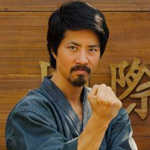
![]() This week and next week, because we’ve been good, we get to learn about NINJA: SHADOW OF A TEAR, the upcoming Isaac Florentine/Scott Adkins joint which premieres September 20th in Austin. You remember david j. moore, who previously shared with us his interviews with Jesse V. Johnson and Ben Ramsey? He visited the set back when it was called NINJA II and did a some interviews that he’s been generous enough to let me run as OUTLAWVERN.COM EXCLUSIVES. (note to Vern look into adding dramatic sound effects as mouseover)
This week and next week, because we’ve been good, we get to learn about NINJA: SHADOW OF A TEAR, the upcoming Isaac Florentine/Scott Adkins joint which premieres September 20th in Austin. You remember david j. moore, who previously shared with us his interviews with Jesse V. Johnson and Ben Ramsey? He visited the set back when it was called NINJA II and did a some interviews that he’s been generous enough to let me run as OUTLAWVERN.COM EXCLUSIVES. (note to Vern look into adding dramatic sound effects as mouseover)
We begin with david’s interview with the legendary Kane Kosugi, who not only tells us about working with Florentine and Adkins, but also what it’s like to be a 6 year old doing fight scenes in Cannon movies.
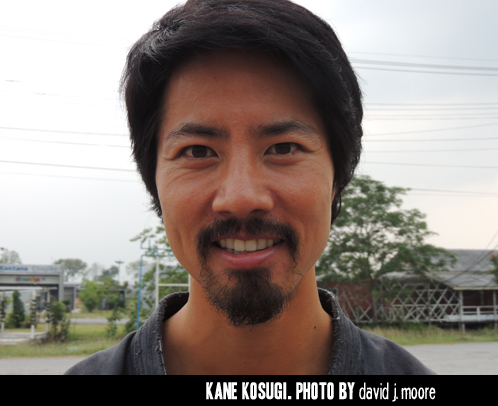 The son of famed Japanese martial artist and action star, Sho Kosugi, Kane grew up on movie sets with his father, who played his dad in several films including Revenge of the Ninja (1983), Pray For Death (1985), 9 Deaths of the Ninja (1985), Black Eagle (1988), and Journey of Honor (1991). As a child, Kane and his brother Shane were taught martial arts almost from birth, and in the films they were in together, they were always right in on the action beside their father, who is famous for playing ninjas. As Kane grew up, he moved to Japan to work full time as an actor in martial arts and action films, and only recently did he return to the states to appear in D.O.A. (Dead or Alive) (2006) and War (2007), starring Jason Statham and Jet Li. He returns in Ninja: Shadow of a Tear, starring Scott Adkins, and his role in the film gives him plenty to work with as both an actor and a martial artist. I spent several days on the Bangkok, Thailand set of Ninja: Shadow of a Tear, and I found Kane to be one of the nicest, most humble actors I’ve ever met.
The son of famed Japanese martial artist and action star, Sho Kosugi, Kane grew up on movie sets with his father, who played his dad in several films including Revenge of the Ninja (1983), Pray For Death (1985), 9 Deaths of the Ninja (1985), Black Eagle (1988), and Journey of Honor (1991). As a child, Kane and his brother Shane were taught martial arts almost from birth, and in the films they were in together, they were always right in on the action beside their father, who is famous for playing ninjas. As Kane grew up, he moved to Japan to work full time as an actor in martial arts and action films, and only recently did he return to the states to appear in D.O.A. (Dead or Alive) (2006) and War (2007), starring Jason Statham and Jet Li. He returns in Ninja: Shadow of a Tear, starring Scott Adkins, and his role in the film gives him plenty to work with as both an actor and a martial artist. I spent several days on the Bangkok, Thailand set of Ninja: Shadow of a Tear, and I found Kane to be one of the nicest, most humble actors I’ve ever met.
–
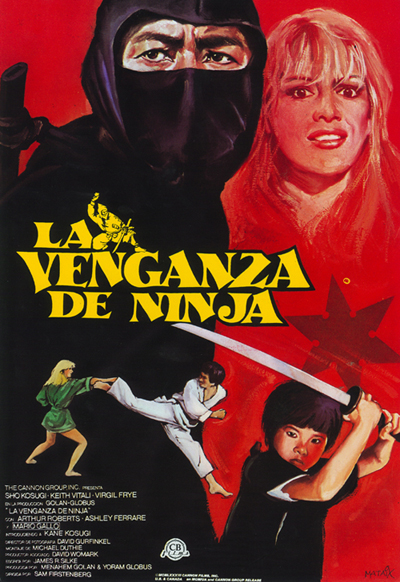 Tell me a little bit about your role in Ninja 2.
Tell me a little bit about your role in Ninja 2.
I play Nakabara, the senpai, the elder. A one-year senior of the main character, played by Scott Adkins. Our characters both trained in martial arts. We didn’t have the same teacher, but I started a little earlier than him, so he has kind of a respect for me. I’m kind of his friend and his mentor, and I’ve helped him through his tough time. His wife was killed, so I help him out. Nakabara has a lot of faces. He’s really deep. He’s wise. He knows a lot of Japanese proverbs. He’s been in the martial arts for as long as he’s been alive. He’s a master. He’s a good guy on the outside, but deep down, he’s got a lot of layers. He’s interesting.
What is your impression of Isaac Florentine, your director?
Ah, he’s great. I’d met him once more than ten years ago. I’ve always wanted to work with him. We always talked about it. There’ve been a few opportunities, but it hasn’t happened until now. When I heard about this project, I emailed him right away and I asked him if it was really him who was directing it. It was, and that’s all I needed to know, basically. I’ve always looked forward to working with him. From everything I’ve heard from a lot of martial artists, from all the movies he’s done … he’s been in the business a long time and he knows what he’s doing. A lot of directors who’ve done action movies don’t really know martial arts. They’re mostly just directors. When it comes time to do the action parts, they turn it over to the action director. They block everything and the director takes a break. But hearing from everyone and talking with Isaac, he’s a martial arts encyclopedia. He knows everything about martial arts, and he also trains in martial arts. He knows what looks good. It’s really rare to have someone like that. I haven’t had too many opportunities to work with someone like that.
How hands-on is he in terms of the action and fight scenes so far on this film?
I’ve only done a little bit so far, but I’ve seen what he’s done on it so far. He’s very hands-on. He knows what he wants. He knows where to put the camera, and he knows how to talk to the actors. He’s been making everyone feel comfortable. That’s really important – even if you have really good fight scenes but it doesn’t match with the actor or their style – the actor may be uncomfortable and it may be hard for them, but he’s great about making us feel comfortable.
Tell me a little bit about Tim Man and his team. They’re doing the fight choreography and some of the stunts.
I’ve been practicing with Tim. I’d never worked with him before. I got this part, and I talked with Isaac, and he said, “Tim Man is our action director.” He sent me his website, and I watched him in a fight, and it was really good. I came here to Thailand and practiced with Tim and he’s really good. His team is really, really good. They can move. They’ve been training a long time.
Talk a little bit about working with Scott Adkins.
Scott is cool. I was a little nervous at first. I was really looking forward to working with him. I’d been hearing about him for the longest time. Isaac always wanted us to work together. I’ve seen his work. There’s no one who can move like him, especially a non-Asian action actor. I’ve always wanted to work with someone who can actually move who isn’t a stuntman. It was exciting. I was thinking, “Shoot, I better start training because I don’t want to get my butt kicked by him.” (Laughing.) He’s really down to earth. Before the movie started, he sent me an email saying, “Let’s do a great action scene together.” He’s really easy to get along with. He’s the star of the movie … I should be the one going up to him, but he’s always coming up to me, making me feel like I’m at home. It’s really rare.
Which movies of Scott’s have you seen and were impressed by?
Undisputed II. I’ve seen parts of Ninja. I didn’t want to see the whole thing because I didn’t want to put an image to what this film should be. But then, it’s completely different. I’ve worked with a lot of stunt guys who’ve worked with him. A few actors as well. I’d heard about him from a lot of people, and I saw a lot of clips of him on YouTube.
What can we expect from Ninja 2?
What Isaac is trying to do and seeing how the shooting is going … I heard that the first Ninja had a lot of computer graphics … but Isaac wanted to go back to the old days, with real action. That’s what we’re doing. No wires. The human body and what we can do. A lot of times, nowadays, movies use wires and computer graphics, so you’ll see the difference. Kind of like with The Expendables and bringing the 80’s back. It’s nice to see that. After all the high tech computerized stuff, it’s nice to go back and see the real thing again. Plus, it’s got a story to it. It’s got a few twists. It’s going to be really action-packed. There’s more than 15 fight scenes. Scott’s got a lot on his hands!
Are you enjoying filming in Thailand?
I’ve been here more than ten times, working on a lot of Japanese projects. So, I know the crews are really good. It’s really Hollywood standards. I’ve worked on a lot of tough shoots. Working in Asia … we go 26 hours straight. I’ve done 26 hours nonstop action. It’s crazy. That was on a movie called Blood Heat. I’ve done Chinese movies where we’ve gone on only four hours of sleep for three days in a row. Those were tough too.
You mentioned bringing the 80’s back to new movies. You’ve come from the 80’s school of filmmaking. You did a bunch of movies with your dad in the Cannon years. You worked with Jean-Claude Van Damme on Black Eagle. What does it feel like working on these movies now versus working in action and martial arts movies when you were a kid? Does it feel the same, or have you noticed a difference?
It’s harder now. The audience has seen lots of stuff now. They’re smart. They know what’s fake and what’s not. They know what’s wire and what’s real. They’ve seen so many action movies that it’s hard to surprise them. I think that’s important. You don’t want to go to the movies and see something you’ve already seen. You want to see something that touches you and surprises you, something that makes you forget about your worries. That’s why you go to the movies. You want to be entertained for two hours. It’s harder and harder for people to get into movies. When I go to an action movie, I look for something that I haven’t seen. The way they shoot the action or the way it’s done. It’s important to surprise the audience.
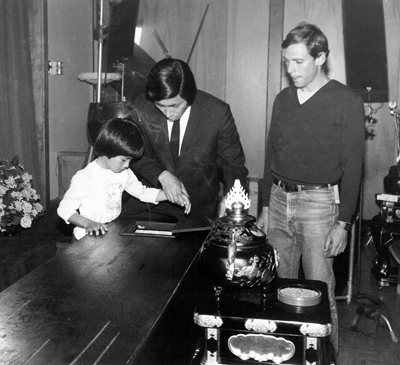 Let’s go back a bit. What was it like being Sho Kosugi’s son, working on movies with your dad, who was basically a ninja?
Let’s go back a bit. What was it like being Sho Kosugi’s son, working on movies with your dad, who was basically a ninja?
It was cool. (Laughing.) I’d like to say I got a lot of girls, but I didn’t. Friends would always ask me about my dad and what it was like being in movies. It was fun. I enjoyed it a lot, and I’d always wanted to be an actor. It’s something I love. I fell in love with it right away. When I first saw my dad in a movie, and when I was actually in a movie. The first movie I did with my dad was Revenge of the Ninja, and the first movie I saw my dad in was Enter the Ninja. He played a bad guy in that movie, but even playing the bad guy he looked like a hero to me. It was because of that that I wanted to be an actor.
I’d asked you earlier this question: Was martial arts and acting a choice for you and your brother Shane, or were these things chosen for you by your father?
Martial arts was something that I had to do. Our parents wanted us to do martial arts until a certain age. They wanted us to learn stuff. Like martial arts or learning to play the piano. We really didn’t have a choice in it. When we were little kids growing up, we just wanted to play. Now that I look back on it, I’m really thankful that they forced us to do the things that we did. Acting was something that we wanted. They gave us the opportunity to do it. If we really didn’t want to, we didn’t have to.
You told me you were six years old on Revenge of the Ninja
Yes.
As a kid, you were pretty convincing as a martial artist.
Yeah, I started when I was a year and half old. By that time on that film, I was six and I’d competed a lot. I trained a lot. It wasn’t difficult at all, actually, to be on that movie.
Does it seem preposterous now when you watch it or think about it? You were beating up full-grown men in that movie.
(Laughing.) It looks funny. I recently pulled out the Revenge of the Ninja DVD and I watched it for the first time in over ten years. It was actually surprisingly good. The action wasn’t bad. My dad’s action was great. Even if it came out right now, it would still be pretty cool. My fight scene was okay. For a six year old, it was okay.
That’s part of the charm of these movies you were in with your dad. You do some action in these “R” rated action films, but you don’t get killed, you don’t get hurt – not really – so kids can watch these movies.
Maybe little kids can look up to these movies and be inspired.
You were part of that pop culture thing that was all about ninjas.
Yeah, after I went to Japan and worked for 20 years, ninjas started coming back with Ninja Assassin and Isaac and Scott’s Ninja. I always wanted to do a ninja movie as an adult, because the first movies I did as a kid were about ninjas. It’s cool to come back with it. This is an opportunity. I’m really thankful to Isaac and Scott for bringing me on board.
Do you remember working with Sam Firstenberg, your director on Revenge of the Ninja?
Honestly, I don’t remember. I remember the main actress.
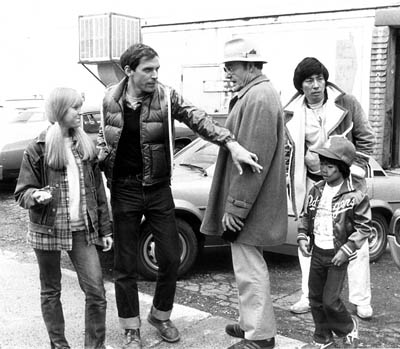 The blonde?
The blonde?
Yes. I remember the action scenes were tough. I remember when she was hitting me with the stick. The staff. I cried because it really hurt. She had to do it over and over again. I remember that really, really clearly. (Laughing.) I remember bits and pieces of that film.
Do you remember seeing yourself on a big screen when the movie came out?
Yeah. I went with a friend of the family. He used to babysit us. He took us, and that was the first time I saw it. I remember going to the popcorn stand and the guy at the counter said, “Hey, you look like that kid in the movie.” I remember him saying, “Oh, yeah, all Asian kids look alike.” (Laughing.) For some reason, I didn’t see the movie with my dad. He was shooting movie after movie.
Your next movie was Pray for Death, right?
No, it was 9 Deaths of the Ninja.
9 Deaths of the Ninja! I love that movie!
That was in the Philippines. I don’t really remember too much about it. Revenge of the Ninja was tough. It was a lot of action scenes. I was in that movie a lot. For 9 Deaths of the Ninja, it was more of a vacation for me and my brother. We weren’t in it that much. We were just there, kind of hanging out. I remember my dad used a crossbow in it.
Was it a package deal when producers called on your dad to be in a new movie? “Okay, we need you because your dad is starring in a new ninja movie? We need you to play his kids!”
No, I don’t know. We would do them if my dad thought we could play his sons. If the story called for it.
That kind of leads into Black Eagle, where your dad played the hero to Van Damme’s villain. Van Damme was pretty new at the time. What was it like working with Van Damme?
At the time, I didn’t know of him. I’d never seen anything with him. He was very charismatic. He was in really, really good shape. He was a nice guy. I was just a kid, eating my crackers, and he asked me, “Hey, I’ll arm wrestle you for those cookies.” So I arm wrestled him. I lost, even with two hands. I didn’t think about that film much, but when I look back on it, I think it was a cool experience working with Van Damme. He was nice to me.
What was it like working with your dad several times?
Growing up, it’s cool. He was gone a lot, working for long periods of time. So it was nice to hang out with him. It was great doing what I loved to do. It was fun. It was better than going to school.
 Have you ever stopped to think that you were a part of a time and era and in specific movies that helped impact the B-action movie world?
Have you ever stopped to think that you were a part of a time and era and in specific movies that helped impact the B-action movie world?
Not really when I was growing up. Not until I was in junior high. I think the first time I realized that my dad was an icon was when we went into a Foot Locker and we were buying shoes, and they were like, “Hey, you’re Sho Kosugi, can you sign our backboard?” Remember the old days when they’d have a basketball rim inside the store? They had him sign it, and I was like, “My dad is famous.” Until then, he was just my dad. When I worked on Journey of Honor, that was the first time I realized, “Wow, I’m getting paid, and I need to start taking this seriously. I can’t play around anymore.” It was when I realized I was a professional. We shot that in Malta, and we shot at least three months. I remember we travelled that whole summer through the old Yugoslavia. Yeah, they built big ships, had costumes, and a Japanese staff of over 20 people came over – it was an epic movie.
What happened with your career after Journey of Honor?
That was when I was 15 or 16. I graduated high school, and then I went to Japan. I worked on TV in Japan. I did two movies that my dad directed when I went to Japan. We did a movie called The Fighting King. I started working there and worked on TV for a long time.
You came back into my radar when D.O.A. came out with Eric Roberts and all the pretty girls.
Yeah, I’d been working in Japan for a while, and I was really busy, but I was enjoying it. I was learning things I’d never have learned if I’d stayed in the states. But my heart was always to work in Hollywood. When I turned 30, I knew it was time that I should start going back. I thought maybe I should start working in the states again. It took me about half a year to find a manager and an agent, and then I met up with the producers of D.O.A. I auditioned for it and I got it. It was a fun shoot. I was really excited. I little later, I did War, the Jason Statham, Jet Li movie. The director of D.O.A. was Corey Yuen, and he was the action director on War. They wanted me to fight with Jet Li, and I got to do a small fight scene with him. There’re more and more opportunities for Asian actors now, but the auditions I usually go to are for bad guys. They just want the bad guy look.
Do you have the bad guy look?
Well … they want the cliché look. You have to look really bad. It’s been an experience going through everything. My heart’s still in Hollywood, but I decided to keep working in Asia. There’s still so much for me to learn.
How often do you train?
I train fairly often in martial arts. I’ve been working in different styles since I’ve been in Japan. Growing up, I did Japanese karate, Tae Kwon Do, but when I went to Japan, I started stunt training, Wu Shu, breakdancing, just any kind of style that will make my action my own. I work out a lot. I don’t bulk up as much as I did when I was in my twenties. I just try to make my body flexible so that I can move so that I don’t get injured easily. I do that kind of training. Before I do a movie, I try to train every day if I can.
Is there anything else you want to add about your career or anything else?
My goal is to always do better in the next movie, and then the next. The fight scenes we do in Ninja 2 will be the best fights I’ve ever done. I hope everyone will enjoy it.
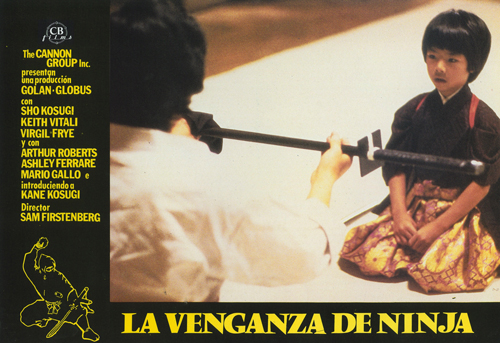
REVENGE OF THE NINJA photos and posters also courtesy of david j. moore


























September 16th, 2013 at 7:04 pm
A triple feature of PRAY FOR DEATH, EVIL DEAD and REPO-MAN followed by a marathon session of TSR’s MARVEL SUPERHEROS role playing game over Godfathers Pizza, Dr Pepper and (the just introduced) Cool Ranch Doritos defined my middle school years and made me the aging geek I am today.
Combining everything I loved or was starting to love: horror, action, comic, RPGs, punk rock and junk food into one glorious night.
If only there’d been a girl there (fat chance)…
Jesus… Even though I quit playing RPGs 20 years ago (was actually JUST telling my roommate how I kinda miss that shit) and stopped actively following comics when music and girls took over… I still have love for all the same stuff.
May Kane truly extend and heighten his pop’s legacy while building one of his own!